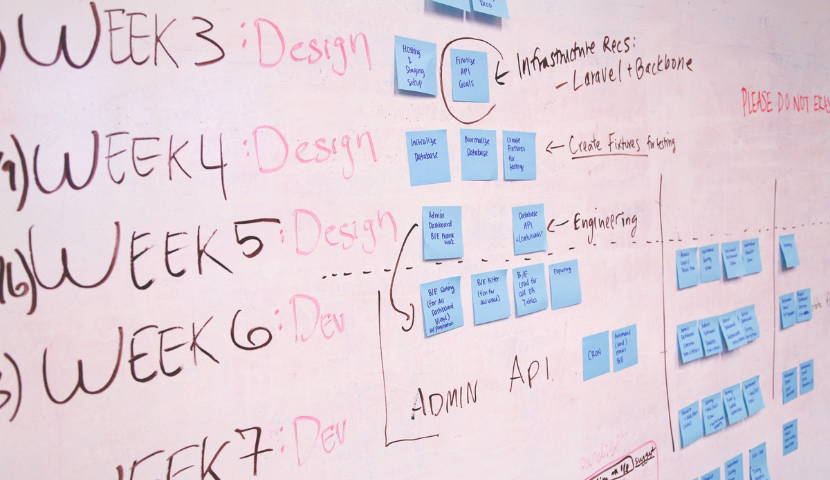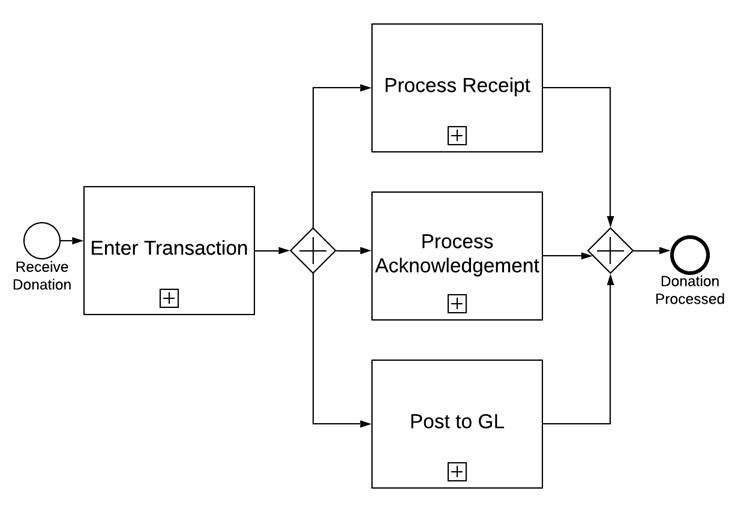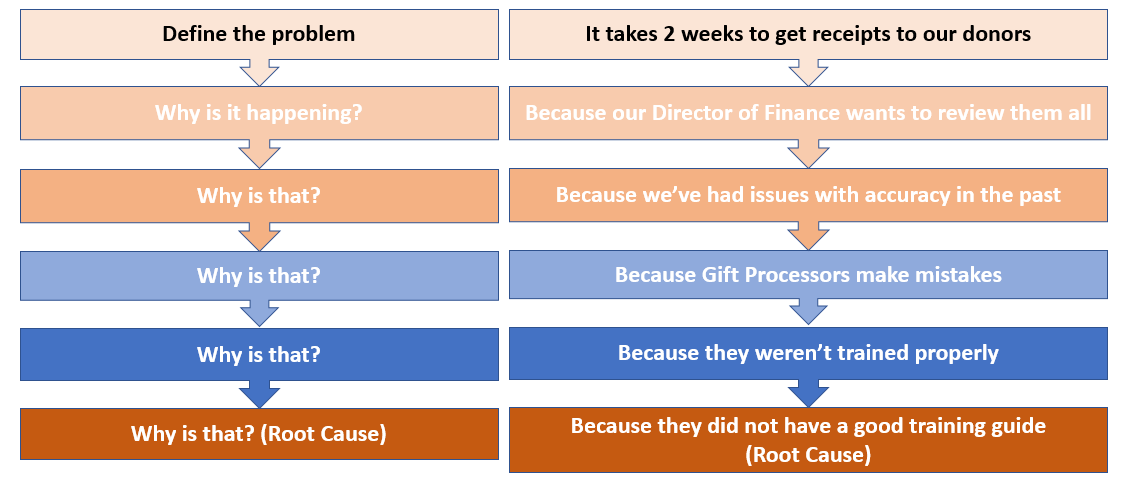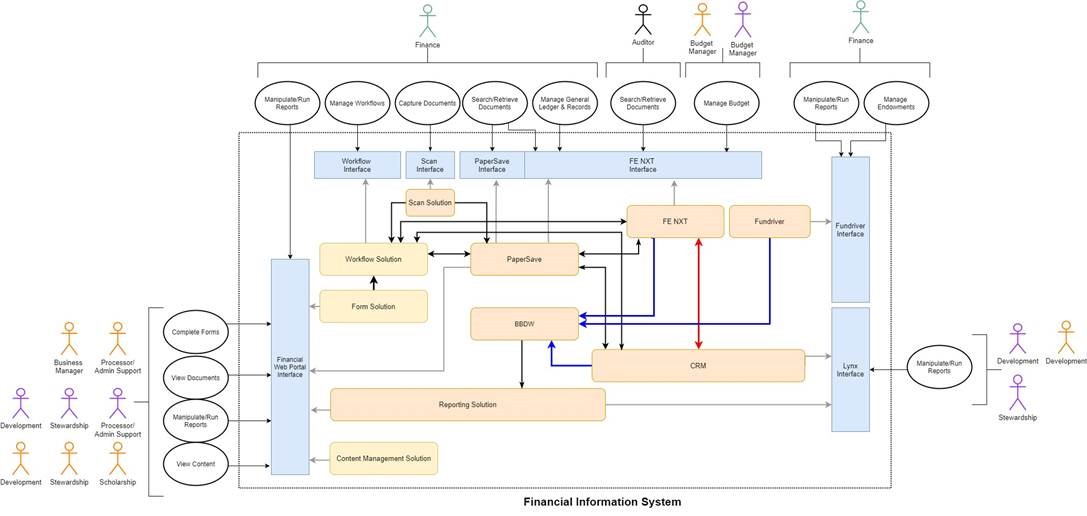Break it Down: How to Manage Complexity in Process Improvement

Liz Murray
Director of Professional Services
Looking to tackle a new process improvement project but don’t know where to start? It is easy to be overwhelmed by the size and scale of a project, the many cross-team dependencies, or the diverse requirements of your stakeholders. Don’t be intimidated! Consider the following tips to take on any challenge:
Organize the Process
A little organization can go a long way. Try to break the process into bite-sized pieces to help you and the process stakeholders dissect the issue. For example, you could break a gift process into three unique sub-processes: batch entry, receipting, and acknowledgement. It is much easier to look at one section at a time versus considering the complete end-to-end process at once.
This exercise can also help to manage scope by setting boundaries for the improvement. For example, you can focus on receipting issues first and then move on to acknowledgements. That way, you will be able to realize gains from your work earlier and can learn from your initial refinements as you move into other areas.
Observe the Process
Sometimes the easiest way to understand a process is to watch someone perform the work. Through observation, you can gather a realistic view into the activities and note any undocumented steps or workarounds. This technique works best for manual processes vs. knowledge work (after all, it’s hard to observe what someone is thinking!). Keep in mind that this exercise can be intimidating so take the time to explain why you want to tag along with someone and make it clear that you aren’t measuring the individual’s performance.
Understand the Root Cause
When examining a complex process, it is important to know that you are addressing the right issue. There may be misdirects that can lead you astray. For example, staff might be concerned that certain software doesn’t meet a specific business need, but in reality, they never received training and aren’t getting the intended benefit from the software. There may even be multiple root causes in some cases. By fully deconstructing each issue, you can be sure to treat the cause not the symptoms.

Watch Out for Exceptions
It’s very easy to get hung up on exceptions. As a rule of thumb, you should aim to design for the majority of use cases. For example, if 90% of requests have a single approver, design the workflow accordingly. Where possible, try to standardize a process and avoid special handling on a case-by-case basis. This will also help you take advantage of automation opportunities.
Know What You Don’t Know
The bigger the issue, the more information there is to process. It’s okay to not know everything, however you need to be aware of how the unknowns may impact the process outcomes. For example, if you are looking at improving solicit codes, you can be aware of current privacy legislation but not future regulations. Considering how the process could be adapted can help ready you for an uncertain future and avoid being blindsided by change.
Draw a Picture
Using visual techniques to better understand the current state and your options for refinement is a great way to help make sense of complex ideas. It enables your short-term memory to take a break so you can focus on the task at hand. Drawing a picture can add clarity and ensure that you and the other stakeholders are truly on the same page. In particular, it can help make cross-team dependencies explicit, allowing staff to clearly understand the big picture beyond their individual role which can lead to more holistic solutions and new value.

Trust the Process
Finally, you need to believe in your refinement process, and trust that you will eventually find clarity. Expect to learn during the process and give yourself time to digest. Complex problem sets take time to solve, so don’t feel badly or pressured to come up with a working solution immediately. With each iteration, know that you are getting closer to the answer.
By tackling complexity one step at a time, you can make sense of the toughest challenges. Give yourself plenty of time to iterate, test, collaborate, and learn. Before you know it, you will be ready to celebrate all that you have accomplished.
Are you following outdated processes that slow down and frustrate your team? We can help you become more streamlined and successful by resolving the operational inefficiencies.
